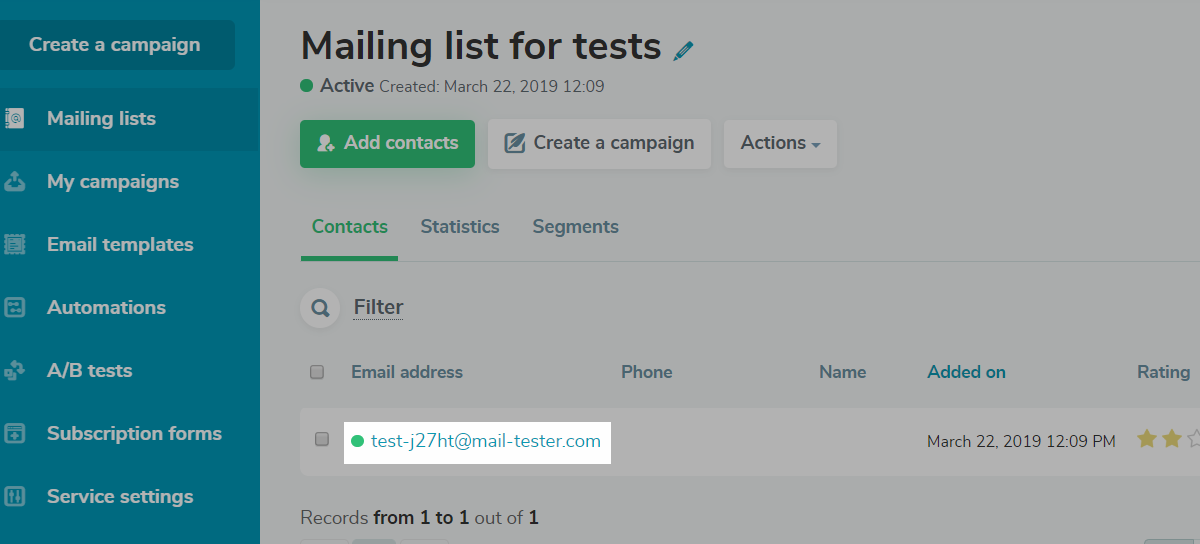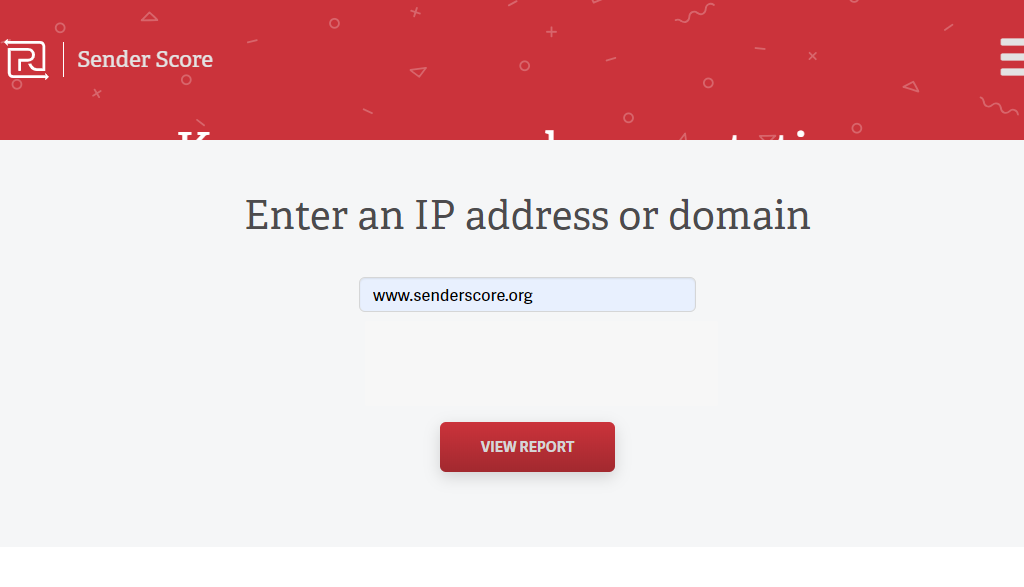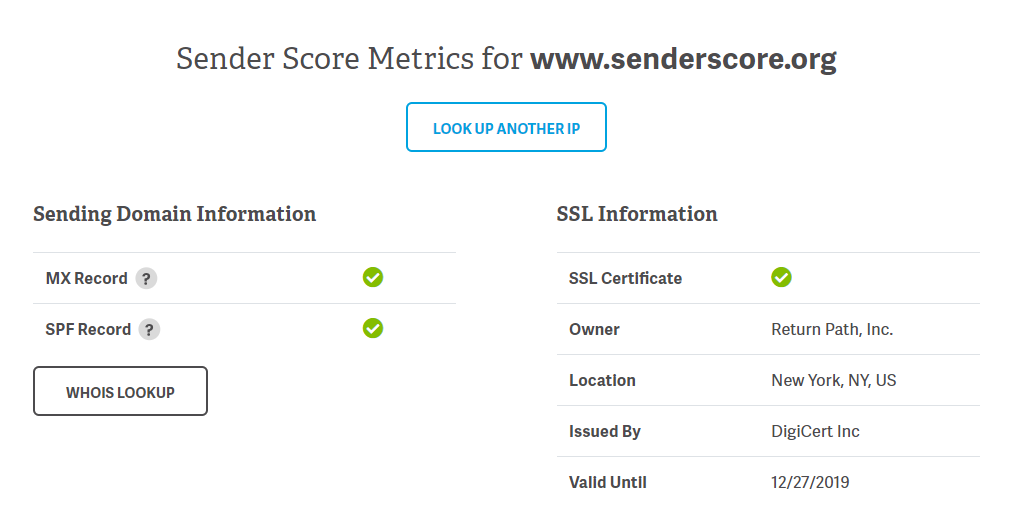Sender reputation is a score assigned to a sender based on the quality of email campaigns, their frequency, size, and user’s interaction. It determines whether email service providers will deliver emails to users’ inboxes or not. However, there’s no single metric to measure it. Choosing a reliable email marketing service liberates you from caring about sender reputation.
Why is sender reputation important?
- Influences email deliverability
- Saves recipients from fraud
- Identifies the level of success
- Influences email deliverability. Email service providers, like Gmail, Yahoo, Outlook, and others, are responsible for delivering emails to customers’ inboxes. Metrics that form the sender reputation, like email authentication, open rates, number of deleted messages and fake addresses, etc., are the main criteria that ESPs take into consideration.
- Saves recipients from fraud. ESPs use the sender's reputation to identify and suppress cybercriminals, who aim to manipulate people’s trust. Cybercriminals hide under successful brands’ names to trick subscribers out of their personal information like their card number, or passwords.
- Identifies the level of success. If your company has a solid sender reputation, it shows that subscribers like your email campaigns. On the contrary, if the sender's reputation gets low numbers, it is high time to take action and find out why.
Six Factors Influencing the Sender Reputation
- Email sending volume and frequency
- SPAM complaints
- SPAM traps
- Bounces
- User interaction
- Unsubscribing
- Email sending volume and frequency. It matters how many emails a company sends during each email campaign and how often it takes place. If your IP address is new, your sender reputation is still low. In this case, sending a massive number of emails will look suspicious for internet service providers, so they are likely to add your IP to a blacklist.
- SPAM complaints. This measurement counts emails that subscribers marked as SPAM. Getting to a spam-box is the worst-case scenario in email marketing.
- SPAM traps. It looks like a real email address, but it doesn’t belong to a real person. A mailing list including spam trap addresses is a signal for ESPs that a company doesn’t use an opt-in strategy. ESPs restrain mailing activity from the law violators and blacklists them.
- Bounces. Soft bounces are temporary problems that don’t depend on the sender’s actions. Hard bounces, however, indicate the fake addresses in the sender’s mailing list influencing sender reputation in the wrong way.
- User interaction. The users’ behavior towards an email demonstrates how valuable these emails are for the audience. High open rates, forwards and shares on socials mean that people enjoy emails while low open rates show that subscribers ignore newsletters and may delete them without regret next time.
- Unsubscribing. An increasing number of unsubscribed users means that email campaigns are irrelevant or the frequency irritates the audience.
How to Check the Sender Reputation
- Mail-Tester
- SenderScore
Monitoring the factors above gives an overall picture of your sender reputation. However, there are tools like Mail-Tester and SenderScore to get more specific information.
Mail-Tester
This tool analyzes an email's structure for any spammy words, files with prohibited content, technical issues, etc.
- Copy a random address to send a test email to.

- Create a mailing list for tests. Paste address from Mail-Tester. You can also add your business and personal addresses if needed. Build an email campaign and send it to the recently created mailing list.

- Go back to Mail-Tester. Examine the results.

SenderScore
This service provides data about a domain, which is sending emails, and SSL information — small data files that digitally bind a cryptographic key to a company’s details.
- Add an IP address or a domain name.

- Look into the metrics.

Best Practices for Improving Your Sender Reputation
- Verify your mailing list
- Clean mailing list
- Use double opt-in
- Warm-up your IP
- Improve your open rates
- Allow setting preferences
- Create valuable content
- Verify your mailing list. If you collected email addresses long ago and haven't sent any email to their owners yet, verify your list. This way, you'll remove the spam traps, outdated and invalid emails, and addresses with typos. This is a great chance to increase your email deliverability and sender reputation.
- Clean mailing list. Monitor how your subscribers react to your emails. If there are recipients who haven’t opened your email for an extended period, send a reactivation email. In case it doesn’t work, cut them loose.
- Use double opt-in. Double opt-in ensures that only real and interested people without fake email addresses will join your mailing list.
- Warm-up your IP. A new IP address is called “cold” because it hasn’t gained ESP credibility yet. Earning a good sender reputation takes a lot of time. Gradually increase your email sending volume to warm up your IP and bear the quality and relevance of your email campaigns in mind.
- Improve your open rates. Pay attention to your open rates. Sender’s name, subject line, and preheader these form subscribers' first impressions of your email. Try different variations of these elements to find out what suits your audience best, and it will result in more opens.
- Allow setting preferences. Give your audience a chance to set their preferences towards the frequency and types of emails. You can also ask your subscribers to share their information to create more personalized emails.
- Create valuable content. Among all technical issues, providing subscribers with useful content is still the essence of email marketing.
Last Updated: 11.04.2024






or